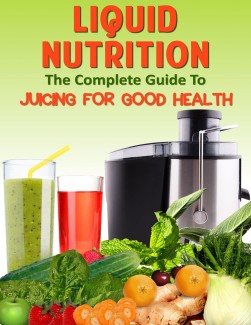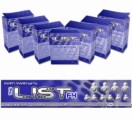
 License Type: Personal Use
License Type: Personal Use  File Size: 3,778 KB
File Size: 3,778 KB File Type: ZIP
File Type: ZIP
 SKU: 57413
SKU: 57413  Shipping: Online Download
Shipping: Online Download
Ebook Sample Content Preview:
It helps to know a few things before you get started on the juicing journey, as knowledge is power.
Experiment - First of all, you can juice pretty much any type of fruit or vegetables. Don’t be scared to experiment. Just think “the more the merrier.” As you walk through the supermarket, consider trying something you never have before.
Get a grocery list started - Get out your recipes and make a list of all the ingredients you will need. Planning makes it much easier to juice when you need to.
Prepare your vegetables and fruits the night before a morning juicing session. This means washing the produce, peeling them if needed, and storing them overnight in airtight containers.
Nuts and Seeds - You should never juice nuts, grains or seeds, but instead grind them and add stir them into your ready-made juice. Adding nuts and seeds is a great way to boost the nutritional value of the juice and get many health benefits, but remember a little goes a long way.
Protein Powders - Protein powder can be added to juices when you drink them as a meal replacement so you get the protein you need.
Choose organic – Organic produce is more expensive, unless you buy from local farms when available, but you will ingest less pesticide and more nutrients.
Timing is everything when it comes to juicing. You don’t want to be drinking your healthy fresh juice on a full stomach! If you do, your body just won’t absorb all those lovely nutrients as well and some of them may even go to waste. A juice is best drank on an empty stomach. It’s not going to fill you completely, but it will give your body a great chance to absorb all that goodness. Then, you can sit down to a meal an hour later.
Don’t drink too quickly - this puts a LOT of pressure on your digestive enzymes that have to work extra hard to digest juice that is frank too fast. The best way to drink juice is to sit back and relax. Take care of your stomach and digestive tract because they are really sensitive.
Thoroughly wash your produce - This removes bacteria and some of the pesticide residue if you did not buy organic. This is especially important with leafy greens where dirt can be stuck in between the leaves. Line the pulp basket in the juicer - If your juicer has a pulp basket, you will need to line it with a plastic bag. This makes cleaning up the juicer afterward much easier.
Cut the produce so it fits - You can tear up the greens or cut up the larger vegetables so that it fits through the feeding chute of the juicer.
Read your juicer’s user manual – This is very important because you will learn best practices for cutting produce, and also which speeds should be used for which fruits and vegetables. This will not only yield you the best juice, but will prevent breakage of the machine. For example, usually harder vegetables are best juiced on high, while softer vegetables, such as cabbage and spinach, are best juiced on a lower setting.
Rerun the pulp - In order to get the most nutrients out of the juice, take out the pulp, and run it through the juicer again to get more juice from the damp, left over pulp.
- File Size:3,778 KB
- License: Personal Use
- Category:Ebooks
- Tags:2016 Ebooks Personal Use







